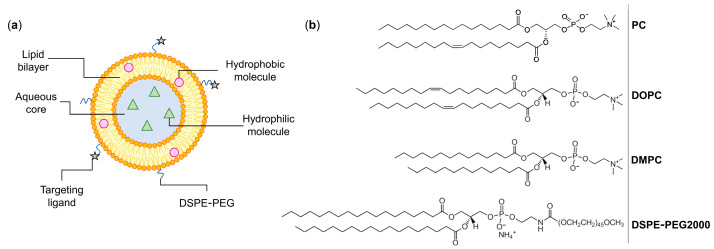Figure 1.
(a) Schematic representation of a liposome. These lipid-based nanosystems mimic biological membranes and are composed of one (unilamellar) or more (multilamellar) concentric lipid bilayers separated by aqueous compartments. Liposomes are able to accommodate both hydrophilic and hydrophobic molecules and their surface may be coated with specific ligands that recognize receptors overexpressed at tumor cells. (b) Chemical structures of commonly used phospholipids for the preparation of liposomes. PC: phosphatidyl choline; DOPC: dioleoyl phosphatidyl choline; DMPC: dimyristoyl phosphatidyl choline; DSPE-PEG: poly(ethylene glycol) 2000 covalently linked to distearoyl phosphatidyl ethanolamine. Images adapted from [20].

